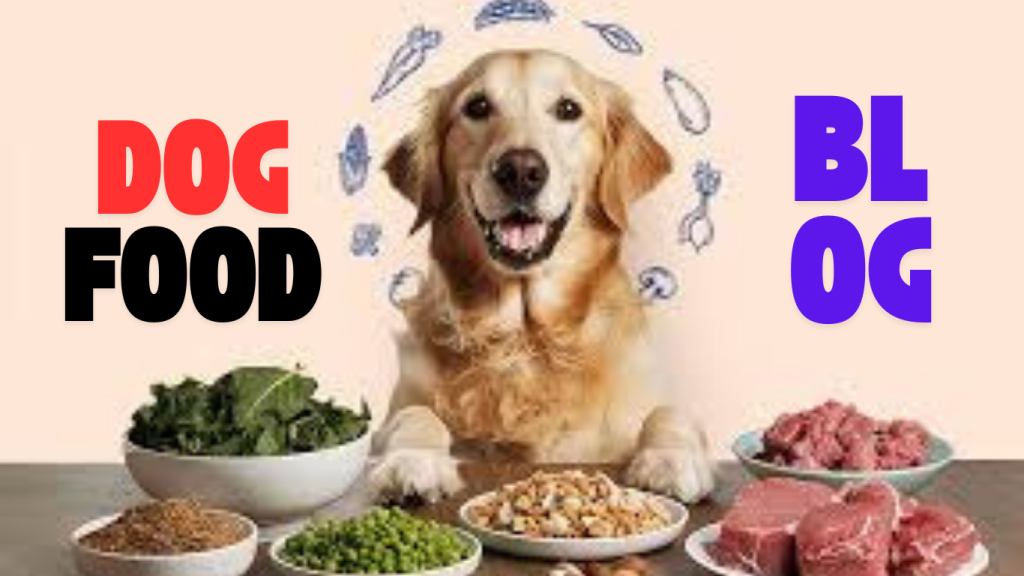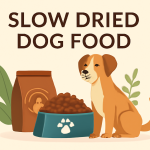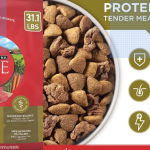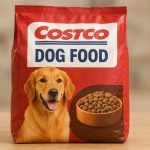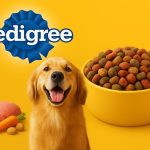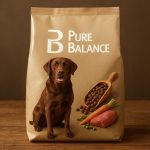When it comes to caring for our canine companions, one of the most important decisions a pet owner makes is what to feed them. Welcome to our Dog Food Blog, where we aim to deliver high-quality, well-researched, and up‑to‑date information to help you make the best nutritional and health decisions for your dog. Whether you’re a new pet parent, considering raw food diets, or the proud owner of an aging pup, this blog is designed to serve your intent: to inform, guide, and answer important questions about dog food, health, and care.
In this post, you will find expert‑advice sections on hydration, safe human foods, seasonal pet care, behavior as related to diet, raw food topics, CBD oil, and more. Our goal is to not just tell you what to do, but why it matters—drawing on nutritional science, veterinary guidelines, and practical tips. Let’s ensure your dog thrives—happy, active, and healthy—through smart feeding, safe handling, and love.
The Importance of Hydration in Dog Health?
Hydration is often underrated when talking about canine nutrition, yet water plays a foundational role in virtually every physiological process. In this section, we’ll discuss why hydration matters, what happens if it’s neglected, how to support proper hydration, and warning signs to watch out for.
- Why water is crucial for dogs
- Water makes up a large portion of body weight and is essential for digestion, absorption of nutrients, elimination of waste, circulation, joint lubrication, temperature regulation, and even cognition.
- Especially for dogs on dry kibble diets, much of the moisture must come from their drinkable water supply; dry food has very low moisture content.
- Active dogs, puppies, older dogs, pregnant or nursing females, and dogs in hot or dry environments have greater needs for fluid intake.
- Consequences of inadequate hydration
- Dehydration can lead to serious health problems: decreased kidney function, urinary tract infections or stones, poor digestive activity, dry skin, lethargy, reduced physical performance, risk of overheating (heat stroke).
- Even mild dehydration reduces appetite, which may trigger weight loss or malnutrition over time.
- Behavioral problems may arise when dogs are uncomfortable, lethargic, or experiencing pain from dehydration or associated issues.
- How to support proper hydration
- Always make fresh, clean water available. Change water bowls daily; ensure bowls are cleaned.
- Use materials for bowls that help preserve cool temperature (ceramic, stainless steel)—plastic sometimes retains heat or odor.
- Incorporate wet or canned food into their diet (if appropriate), which adds moisture.
- Consider water fountains for pets who seem reluctant to drink from stagnant bowls—it may encourage more drinking.
- During hot weather, provide shade, avoid direct sunlight, and offer water breaks during exercise. Use shallow pools or sprinkler play (if the dog enjoys it) to cool them.
- Monitor water consumption: if your dog is drinking much more or much less than usual, that signals an issue.
- Recognizing warning signs
- Dry gums, tacky, sticky feeling rather than moist.
- Skin turgor (pinch test): gently pinch the skin between the shoulders—if it remains tented rather than returning quickly, dehydration may be present.
- Lethargy, sunken eyes.
- Panting excessively, weakness.
- Dark yellow urine, infrequent urination.
- If vomiting or diarrhea has occurred, fluid losses are magnified; veterinary attention may be necessary.
It is important to note that hydration isn’t just about water quantity—it’s also about frequency, accessibility, and quality. Clean water, multiple locations (indoors, outdoors), and making drinking as easy and inviting as possible all contribute to optimal dog health.
Top Five Human Foods That Are Safe and Healthy for Dogs?
Many dog owners wonder whether certain human foods are safe, or even beneficial, for dogs. Below is a list of five human foods that are generally safe and nutritious for dogs, plus how to serve them properly.
| Human Food | Key Benefits | How to Prepare / Serve | Things to Watch Out For |
|---|---|---|---|
| 1. Carrots | High in beta‑carotene, fiber, low in calories; good for teeth chewing. | Serve raw (cut into bite‑size sticks) or lightly steamed. Always wash. | Hard pieces can be choking hazard; avoid seasoning/salts. |
| 2. Pumpkin (plain, cooked) | Good source of fiber, helps digestion and mildly sweet taste many dogs love. | Boiled or baked without sugar/spices; canned plain pumpkin (not pie mix). | Over‑feeding can cause loose stools; check for no additives. |
| 3. Blueberries | Antioxidants, vitamins, low calorie; may support immune system. | Give fresh or frozen; small amounts as snack or mix‑in. | Dogs with sensitive stomachs may not tolerate too many; avoid moldy or sugary ones. |
| 4. Cooked Lean Meats (Chicken, Turkey, Beef) | High‑quality proteins, amino acids for muscle, energy. | Fully cooked, unseasoned, no bones. Remove skin/fat if needed. | Bones (especially cooked) are dangerous; fats/spices/sauces can upset stomach. |
| 5. Plain Yogurt (unsweetened, non‑xylitol sweetened) | Probiotics, calcium; may benefit gut flora if tolerated. | Use small spoonfuls; preferably plain Greek yogurt. | Avoid flavored yogurts with sugar, artificial sweeteners, or xylitol; check for lactose intolerance signs. |
These human foods can help your dog’s diet by adding variety, nutrients, and flavor. Always introduce new foods gradually (over several days) to avoid digestive upset, and when in doubt, consult your veterinarian—especially for dogs with known allergies, underlying health issues, or special dietary needs.
Seasonal Pet Care: Essential Tips for Every Time of Year
Seasonal changes can dramatically affect your dog’s nutritional, hydration, and overall healthcare needs. Here are essential tips by season, so you can prepare and protect your dog throughout the year.
| Season | Environmental Challenges | Nutrition & Food Adjustments | Other Care Tips |
|---|---|---|---|
| Spring | Allergens (pollen), more outdoor activity begins, potential tick/flea risk. | Increase omega‑3 fatty acids (fish oil) to help with inflammation; monitor for food allergies that flare in spring. | Grooming to remove pollen/hair; tick/flea preventative; check ears (they can trap allergens). |
| Summer | Heat, humidity, risk of dehydration, insects, sunburn in light‑haired dogs. | Use wetter foods; freeze safe broths for cooling treats; avoid feeding heavy meals midday. | Plenty of shade and water; avoid walks during heat peaks; check paws (hot pavement); protect skin. |
| Autumn | Cooling weather, maybe more rain, shorter daylight; shedding season. | Adjust calorie intake if activity drops; possibly boost vitamin A/C for immune support. | Rake up fallen leaves (prevent mold/toxins); maintain exercise; groom coat; check for moisture buildup. |
| Winter | Cold temperatures, lower activity, potential for ice salt / antifreeze exposure. | Increase dietary fats a bit if needed for maintaining energy; ensure food stays dry and clean; warm bedding. | Limit exposure to harsh ice/salt; inspect paw pads; consider vet check for arthritis; ensure dry, warm shelter. |
Beyond nutrition and feeding, year‑round seasonal care includes vaccines (if scheduled), routine health checks, parasite control, and grooming adjustments (coat, nails etc.). By anticipating the needs of each season, you’ll ensure your dog is comfortable, healthy, and resilient all year long.
CHECK OUT OUR DOG BLOG
Welcome to our curated set of resources, articles, tools, and community conversations that make our Dog Food Blog more than just content—it’s your trusted hub for dog nutrition, care, and wellness.
- Dive into expert articles on raw food diets, kibble vs fresh vs freeze‑dried.
- Browse real owner stories: successes, challenges, and what worked.
- Nutrition calculators: estimate caloric needs by age, breed, weight, and activity.
- Ingredient glossaries: what is “guaranteed analysis,” “AAFCO statement,” probiotics / prebiotics.
- Vet Q&A section: Submit your questions, get feedback from professionals.
We build this blog to satisfy your intent: finding answers to dog feeding questions, avoiding harmful foods, implementing best practices, and staying up to date with canine health research.
The Gut–Brain Axis: Why Avoiding Ultra‑Processed Dog Food Supports Better Behaviour?
The gut‑brain axis refers to the two‑way communication between the gastrointestinal system and the central nervous system. Research in both humans and animals increasingly supports that what a dog eats can influence not just physical health, but mental health and behavior. Below are reasons why avoiding ultra‑processed dog food often supports calmer, more stable behaviour, and better cognitive function.
- Microbiome health: Ultra‑processed foods often lack sufficient fiber, prebiotics, and natural microorganisms. They may encourage dysbiosis (imbalanced gut flora) which can lead to poor digestion, inflammation, and even mood swings or anxiety.
- Glycemic peaks: Highly processed dog food may contain simple carbohydrates and fillers that cause rapid spikes in blood sugar, followed by “sugar crashes”—these can affect energy levels, impulse control, hyperactivity.
- Additives, preservatives, artificial colours/flavours: These can provoke sensitivities or allergic reactions, which often manifest behaviorally (itching, discomfort, restlessness). Dogs can’t tell us they feel bad—they act it out.
- Nutrient quality and absorption: Whole, minimally processed ingredients tend to retain more nutrients; better digestibility means nutrients truly absorbed, leading to better support for brain function (omega‑3s, antioxidants, B vitamins).
- Long‑term health outcomes affect behaviour: Chronic inflammation, gastrointestinal pain or discomfort, joint issues—if the diet contributes to any of these—can make dogs more irritable, less tolerant, less trainable.
By choosing dog foods with minimal processing, clearly defined ingredient lists, limited fillers, and high‑quality proteins and fats, you help support your dog not just physically but mentally and behaviorally. For many dog owners, improvements in focus, calmer temperament, and overall wellbeing follow dietary upgrades.
The Best Dog Food Blogs
If you want to broaden your reading, keep up with current research, or see how others are doing things (recipes, raw food, homemade diets, etc.), here are some of the best dog food / dog nutrition blogs and resources that are consistently high in quality:
- The Canine Dietitian Blog – well structured, expert advice. thecaninedietitian.co.uk
- PetsFez: A Complete Guide to Dog Nutrition and Diet – covers the basics, vitamins, minerals, feeding by life‑stage. petsfez.com
- ProDog Raw – Dog Hydration: Expert Tips – detailed insights into hydration and the health implications. ProDog Raw
- Other pet nutrition blogs that both dog owners and vets respect: those that include data, cite veterinary sources, show feeding charts.
Following blogs like these helps you stay informed, compare approaches, see new products, and decide what fits your dog best especially given breed, age, allergies, activity.
How to Choose the Right CBD Oil for Your Dog’s Needs?
CBD oil for dogs is becoming more popular, but choosing the right product requires caution to ensure safety, efficacy, and legal compliance. Here’s how to make an informed choice.
- Understand the legal and safety landscape
- Laws regulating CBD vary by state and country. Make sure use is legal in your jurisdiction.
- Check third‑party lab test results (COA – Certificate of Analysis) for purity, absence of THC (or acceptable legal levels), pesticides, heavy metals.
- Check concentrations and dosage
- Look for the milligram content per ml. Different products have different potencies—start low, go slow.
- The proper dosage depends on the dog’s weight, overall health, and what condition is being addressed. Follow veterinary guidance.
- Type of CBD product
- Full‑spectrum vs broad‑spectrum vs isolate. Full‑spectrum includes trace cannabinoids / terpenes; isolate is pure CBD. There may be differences in effect.
- Delivery method: tinctures (dropper under tongue), treats, topicals. Bioavailability and onset time differ.
- Additional ingredients
- Check for carrier oils (MCT, hemp seed oil, etc.). Avoid artificial flavourings, sugars, preservatives, or any substances known to be harmful to dogs.
- If product includes other botanicals, make sure they’re safe for dogs.
- Monitoring and vet consultation
- Begin with small trial period and monitor for side effects (drowsiness, upset stomach, changes in appetite, behaviour).
- Use logs or notes to track results. Repeat with vet supervision especially if dog is on other medication.
Blog Terms & Conditions
We do not deliver our Raw Dog Food here… YET!
This blog provides information, guidance, and commentary for educational and informational purposes only. We are not currently selling raw dog food directly to consumers. All dietary changes, including switching to raw food, should be discussed with a licensed veterinarian.
How to Safely Handle Raw Dog Food
Handling raw dog food carries risks of bacterial contamination, parasites, and spoilage. To safely integrate raw food into a dog’s diet:
- Use reputable sources: ensure raw food is fresh, stored properly, preferably frozen until use.
- Wash hands thoroughly before and after handling raw meat. Clean all utensils, bowls, cutting boards separately. Disinfect surfaces.
- Thaw frozen raw food in refrigerator (not at room temp). Use within recommended timeframe.
- Avoid contact between raw dog food and human food preparation spaces.
- Monitor your dog’s health closely: stool consistency, energy, digestion. If any issues arise, stop raw and consult vet.
How to Overcome Common Raw Dog Food Challenges
Many dog owners are interested in raw diets but face barriers. Here are common challenges and solutions:
| Challenge | Solution |
|---|---|
| Cost | Plan bulk purchases, use seasonal meats, balance raw with safe cooked meats where appropriate; compare vendors. |
| Convenience / time | Prep in batches; freeze portions; use raw food delivery services (if available). |
| Nutritional completeness | Use balanced raw diets (commercially formulated or with vet guidance); include required supplements like calcium, vitamins, etc. |
| Safety concerns | Follow hygiene rules above; select pathogen‑tested raw meats; freeze if needed; ensure clean supply chain. |
| Dog pickiness / refusal | Mix raw with familiar foods; gradually transition; try different proteins; consider textures. |
The Raw Dog Food Blog
Raw diets are among the most debated topics in dog nutrition. In this subsection, we cover:
- The potential benefits (improved digestion, shinier coats, less stool volume, sometimes allergies)
- Risks (bacterial contamination, unbalanced nutrient ratios, cost, possible hazards to immunocompromised dogs)
- Success stories and cautionary tales from owners
- How to decide if raw is appropriate for your dog (age, breed, health status, vet input)
Social Media
Connect with us on social media to get quick tips, community stories, and updates:
- Instagram: daily photo/video tips, raw food transformations, hydration hacks
- Facebook: community discussions, Q&A, live sessions with vets / dietitians
- Twitter/X: shorter news, alerts about recalls, ingredient warnings
- TikTok / Reels: fun, visual tours of prep, feeding routines, recipe demos
Social media helps us stay responsive, interactive, and learn from other dog owners’ real‑life experiences.
Benefits of Raw Dog Food ‑ And Why It’s the Best Choice for Your Dog
Note: Raw food isn’t right for every dog, but for those whose health conditions, lifestyle, and resources align, raw may offer multiple benefits.
- Higher moisture content: supports hydration naturally.
- More natural, less processed ingredients: fewer fillers, artificial preservatives, potentially better digestibility.
- Potential improvements in coat, skin, energy, reduced stool odor/volume.
- Allergy / sensitivity benefits: some dogs respond better when proteins are less processed.
- Behavioral benefits via improved gut health (ties back to gut‑brain axis).
Always balance benefit vs risk, cost, and practicality. Raw feeding requires diligence, veterinary oversight, and excellent hygiene practices.
Blog Terms & Conditions
We strive for accuracy and current information. However, content on this site is for general informational use only, and not a substitute for advice from a licensed veterinarian. Before making significant diet changes—including adding raw food, CBD oil, or novel ingredients—consult your vet. We disclaim liability for adverse effects arising from use of this content.
7 Easy Ways to Create a Pet‑Friendly Home—Without Sacrificing Style
Designing a home that’s both stylish and safe / comfortable for dogs is absolutely possible. Here are seven ideas:
- Durable, washable flooring – tile, sealed hardwood, or high‑quality vinyl that resists scratches and is easy to clean.
- Furniture with stain‑resistant fabrics – choose slipcovers, microfibers, outdoor fabrics indoors, or leather alternatives.
- Safe zones – create dog‑friendly areas: cozy beds, feeding stations in low‑traffic areas, crate or den for quiet time.
- Smart storage – built‑in cabinets or baskets for toys, leashes, food supplies, grooming tools to reduce clutter.
- Accessible water stations – stylish water bowls, fountains or spouts integrated into interior design; elevated bowls for larger breeds.
- Pet‑friendly landscaping / outdoor design – durable turf or lawn sections, paths that avoid mud, covered areas for shade.
- Lighting & comfort – soft lighting, open airflow, warm beddings; avoid drafty spots; ensure visibility at night with reflective collars or LED path lights.
FAQ
FAQ 1: Is raw food diet safe for puppies?
Puppies have more demanding nutritional needs (calcium, phosphorus, exact amino acid profiles). While raw diets can be safe, they must be carefully balanced and ideally formulated or supervised by a veterinary nutritionist. If you choose to feed raw to a puppy, ensure the product meets growth‑stage requirements and hygiene is impeccable.
FAQ 2: How often should I feed my adult dog, and how much?
Feeding frequency and quantity depend on breed, age, activity level, metabolism, and health. A typical adult dog eats twice per day. Portion sizes should match caloric needs (as per guidelines on the food label or vet advice) and be adjusted for changes in weight or activity. Monitoring body condition (ribs should be felt, not seen; flat tummy; energy level) is more reliable than relying solely on volume.
FAQ 3: What are signs that my dog has a food allergy or intolerance?
Common signs include chronic itching or scratching, recurrent ear infections, gastrointestinal upset (diarrhea, vomiting), flatulence, changes in coat or skin (dry, flaky, red). To diagnose, often an elimination diet under vet supervision is used (removing suspect ingredients, then reintroducing) or using limited‑ingredient / hypoallergenic foods.
FAQ 4: Can I mix raw and commercial (kibble or canned) foods safely?
Yes, mixing is possible and sometimes beneficial. It helps add variety, nutrients, and can ease transitions. Make sure each component is balanced overall: raw portion should be safe, contamination controlled; commercial part should be high quality. Gradually introduce change over 5‑10 days or more to avoid digestive upset.
FAQ 5: How much does quality of ingredients affect cost vs benefits?
Higher quality ingredients often cost more: better protein sources, less filler, better processing, safety controls. But the benefits may include better health, fewer vet visits for food‑related issues, better digestion, coat, energy, behavior. For many pet owners, the upfront cost may be higher, but long‑term investment in health yields value. Thus cost vs benefit must be evaluated case‑by‑case, with budget, dog’s health status, and priorities in mind.

